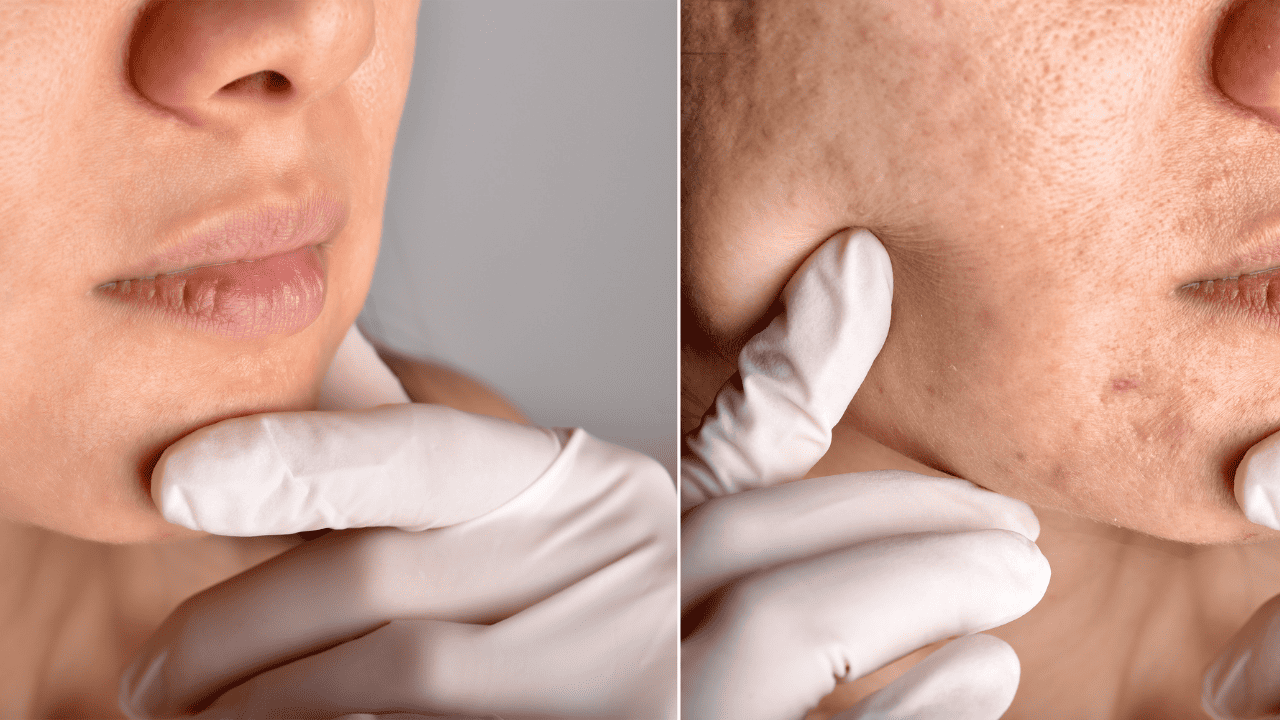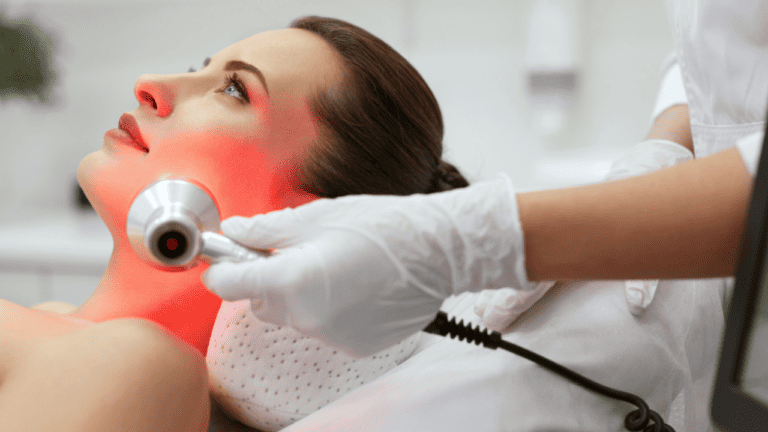To get rid of ice pick scars, there is vast number of specific professional treatments to consider such as micro needling, punch grafting, chemical peels, fillers and more. Unfortunately, at-home measures usually are not as effective on ice pick scars because the scar is deeper than usual scars.
Fortunately, professional treatments range in prices from affordable to inexpensive, and invasive to non-invasive which we will discuss in this article. We’ll also explore potential effective strategies and treatments you could do at-home if you are not keen on seeing a dermatologist.
Key takeaways
- Ice pick scars, characterized by their deep, narrow appearance, can be effectively treated with a combination of professional dermatological procedures and consistent at-home care.
- Preventing ice pick scars is crucial and can be achieved through early and effective acne treatment, avoiding skin picking, and protecting the skin from sun damage.
- Emotional support and patience are key components in the journey of treating ice pick scars, with various support systems and success stories offering encouragement and guidance.
Professional Treatments for ice pick scars

Dermatological Procedures For Ice Pick Scars
Ice pick scars typically are deeper than types of scars, for example boxcar or rolling scars. They are characterized by their deep, sharp and pitted appearance, and because they penetrate deeper into the skin, extending into the dermis layer, over the counter remedies often are not enough to treat them completely.
Over the counter acne scar remedies typically are only designed to address surface level skin issues, so we highly recommend seeing a dermatologist for one of the treatments we’ll discuss as it is often the most reliable, quickest and effective route to significantly fade ice pick scars.
Laser Therapy To Fade Ice pick Scars
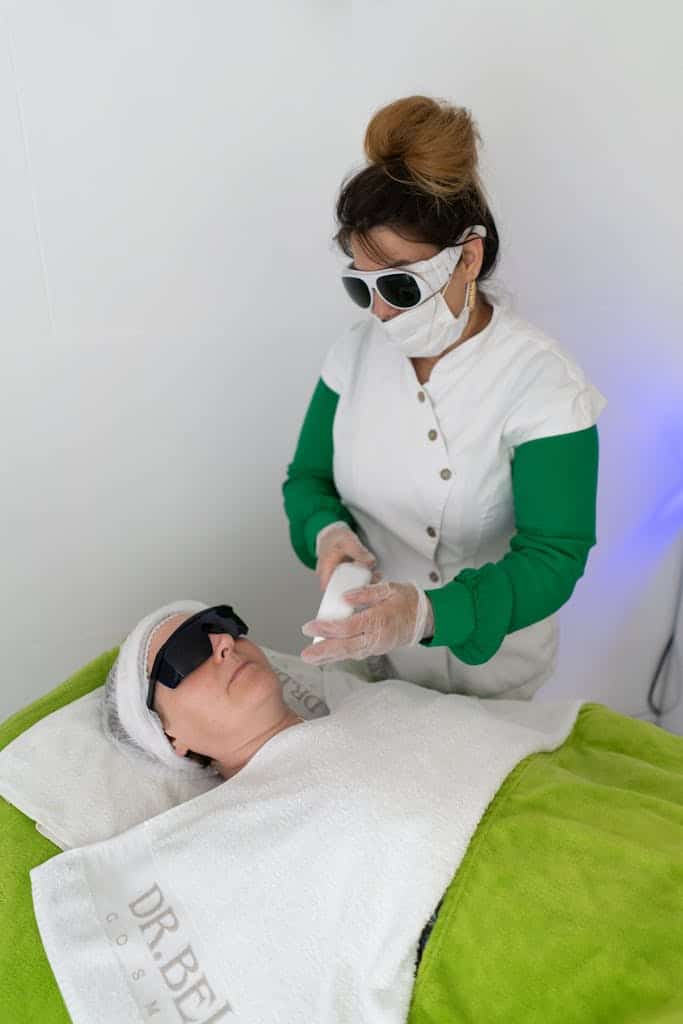
Laser therapy is a popular method for treating ice pick scars, however keep in mind that dermatologists need to be present so this means it is usually more expensive.
Also, fractional lasers, like the CO2 and Erbium laser need to be spot treatments that are small enough to be able to penetrate into the icepick scar. This is key because lasers usually focus on removing the top layer of skin and promoting collagen production. By ensuring that the laser is hitting the deepest depth of the ice pick scar, it will stimulate collagen production deeper and help to reduce the depth of the scars more effectively over several sessions.
Chemical Peels To Fade Icepick Scars
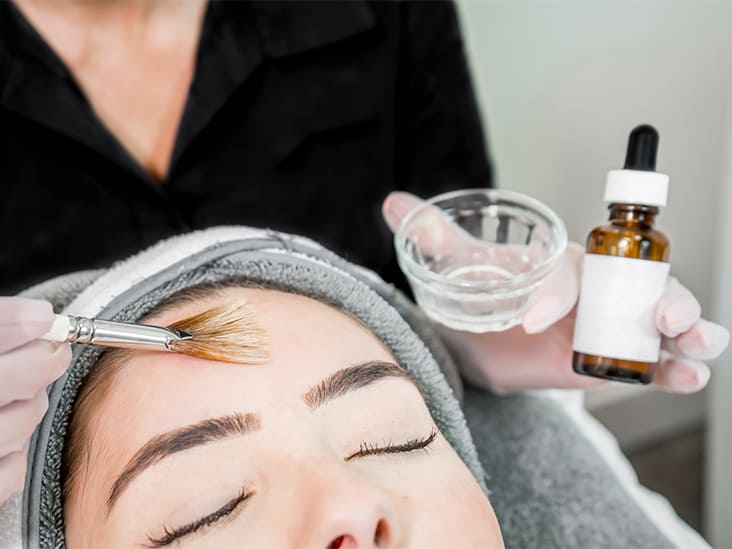
To fade Ice Pick scars, chemical peels have to be very concentrated because deeper peels are often necessary to remove enough layers of the skin that will reach the depth of the Ice Pick scar. Chemical peels are very effective because they essentially stimulate the skin’s natural healing process by causing a ‘controlled injury’ to the outermost layer of your skin, and at most the uppermost part of the dermis.
Since this is the case, deeper chemical peels should always be conducted in a professional environment because if applied incorrectly it can lead to a variety of complications. These complications include even worse permanent scarring, bacterial, fungal, or viral infections, and in very rare cases, complications could even be life threatening.
Microneedling To Fade Icepick Scars

Microneedling is very effective for fading Ice Pick scars because it involves using a device with tiny needles to puncture the skin, stimulating natural collagen production at the depth of the Ice Pick scar. Helping collagen production to fill up the scar from within, microneedling is a very effective Ice Pick scar treatment.
Microneedling is typically held conducted in a professional environment because ensuring the equipment is sharp, clean and not overused on the skin is very important for good after-recovery.
However, there are at-home kits available as technology has become more advanced, if you decide to micro needle at home, make sure to be extra careful and follow dermatologists’ advice on how to do so.
Surgery To Fade Ice pick scars
When Ice Pick scars are extremely deep, dermatologists might recommend surgery. In this case, more invasive methods like punch excision or grafting where they remove the scar tissue and replace it with healthier skin that they may get from behind the ear.
These two methods are very useful for deeper scars because essentially both remove the scar tissue completely. However for grafting, the Ice Pick scar tissue is completely removed and replaced with healthy tissue from another area of the body that is usually less visible.
Punch excision is exactly like the name sounds, using a small circular punch tool the ice pick scar is physically removed and the surgeon closes the wound with a suture. This usually results in fine line scar which can then be further treated with laser therapy or dermabrasion, which are more effective on surface level scars.
Dermabrasion does not fade ice pick scars
Unfortunately whilst, dermabrasion or microdermabrasion is an effective skin resurfacing technique for other types of scars like boxcar or rolling scars, Ice Pick scars are too deep for dermabrasion to work.
Ice Pick Scars At Home Remedies

Skincare Routine For Ice Pick Scars
Although Ice Pick Scars are hard to treat with at home methods, it does not hurt to maintain a good skincare routine that works to improve skin texture. Also, it’s important to prevent new Ice Pick scars from occurring.
Certain over the counter products and home care strategies can greatly help your journey to clearer and more even skin tone and texture:
- Topical Retinoids: Retinoids increase skin cell turnover and collagen production. If you are able to consistently use this, specifically targeting the Ice Pick scars, they could possibly improve the texture of your skin, making the scars less noticeable over time.
- Exfoliation: Exfoliation is definitely important for upkeep and ensuring new cell growth.
- Sun Protection: Sun exposure can darken scars and make them more noticeable so make sure to use a broad-spectrum sunscreen daily to protect your skin from further hyperpigmentation.
- Hydration and Nutrition: Keeping your skin hydrated with a good moisturizer and maintaining a healthy diet rich in vitamins and antioxidants can support skin healing and overall health. Hydrated skin has a better healing environment, which can slightly aid in the appearance of scars.
- Silicone Gel or Sheets: These are often used for hypertrophic scars and keloids, but they can also be beneficial for acne scars by providing hydration and protection to the skin. They might help in making the scars less noticeable over time.
- Patience and Consistency: It’s essential to remember that treating scars takes time, and consistent care is key. Over-the-counter treatments can be slower to show results compared to professional treatments so be patient.
How To Prevent Icepick Scars

Early Acne Treatment
Fading Ice Pick scars is great, but the best strategy is definitely preventing new Ice Pick scars from forming and this is by managing acne effectively. In particular cysts and nodules significantly increase the risk of scarring, so try to include over-the-counter products that contain benzoyl peroxide or salicylic acid which have been proven to be effective for mild cystic acne. .
Avoid picking at your acne
The best way to avoid Ice Pick scars is to avoid picking at your skin. Picking causes bacteria to be pushed deeper into the skin, increasing the likelihood of severe inflammation and scarring.
Psychological Impact and Support
Emotional Toll
Dealing with icepick scars can be emotionally challenging. These scars can affect self-esteem and social interactions, leading to feelings of self-consciousness or social withdrawal. Recognizing the psychological impact is an important step in the healing process.
Seeking Support
For those struggling with the emotional aspects, seeking support can be beneficial. This could be in the form of therapy, where talking to a mental health professional can provide coping strategies and emotional relief. Support groups, either in person or online, can also be helpful. Connecting with others who understand your experience can be comforting and reduce feelings of isolation.
Understanding Icepick Scars
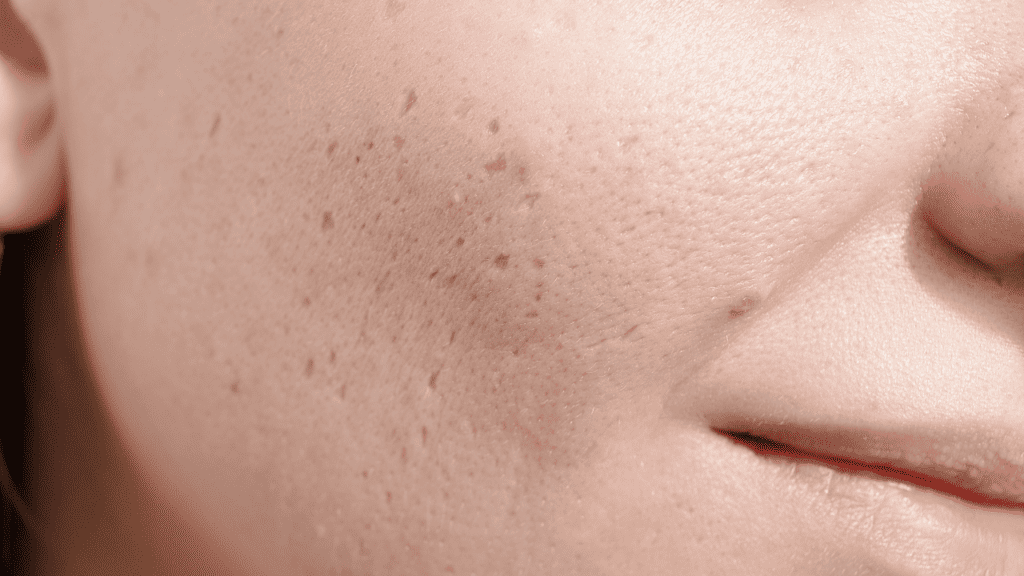
What are Icepick Scars?
Icepick scars are a type of acne scar, named for their narrow, pitted appearance that resembles the puncture of an ice pick. These scars are particularly challenging to treat due to their depth and steep sides. They often develop after a severe acne outbreak and can vary in depth and size.
Causes and Characteristics
The primary cause of icepick scars is the inflammation from severe acne, such as cysts or papules. When the skin’s supportive structures are damaged, it leaves behind these deep, narrow indentations. Unlike other acne scars, which are more superficial, icepick scars penetrate deeper into the skin layers, making them more noticeable and harder to treat.
Conclusion
Navigating the journey of treating and preventing icepick scars can be challenging, but it’s important to remember that you’re not alone. With the right combination of treatments, skincare practices, and lifestyle adjustments, significant improvement is possible.
Remember to consult with a dermatologist for personalized advice and treatments. Also, never underestimate the power of a supportive community and positive mindset. Stay patient and consistent with your efforts, and keep in mind that every step you take is a move towards healthier skin and boosted confidence.
faqs
What are icepick scars?
Icepick scars are a type of acne scar that appear as deep, narrow, pitted marks on the skin, typically resulting from severe acne.
Can icepick scars be completely removed?
While complete removal can be challenging, various treatments like laser therapy, microneedling, and chemical peels can significantly reduce their appearance.
Are home remedies effective for treating icepick scars?
Home remedies may provide some improvement in skin texture, but professional treatments are generally more effective for significant results in treating icepick scars.
